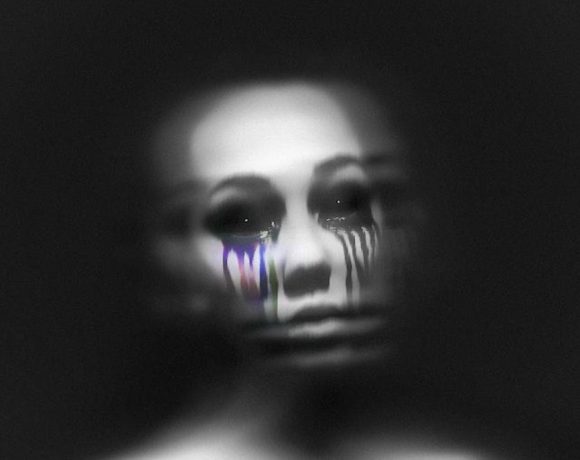Headline photo credit thanks to Charlota Blunarova for Unsplash.
Do you want to get involved in creative work? Are you thinking about getting serious about illustration? Worried that you won’t make enough money and that the competition in this profession is too high? There is still room for you in the niche that interests you! Read this article to find out how to become an illustrator, what training to take, and what difficulties you may encounter.
Who is an illustrator?
It is a person who creates images, graphics, and artistic images for different fields. Most of the images we encounter in everyday life are the work of an illustrator, from cute drawings on postcards to bright and eye-catching product packaging. This profession is perfect for those who live drawing and can’t imagine their life without it. As a rule, an illustrator is not bound to a specific schedule or place. You can paint from sunset till dawn and take breaks whenever you want.

Surprisingly, you don’t have to know how to draw to be an illustrator. Nevertheless, any illustrator should know: fundamentals of composition, color science, and fundamentals of plastic anatomy. These skills are within everyone’s reach, they are built up through frequent practice and exercises. There’s a lot of competition in this profession. To stand out and be noticed, you need to constantly evolve, follow trends, and look for new projects.
Where illustrators can apply their skills
There are an incredible number of areas in which you can work as an illustrator. Everyone will be able to find what they like. Here’s a list of the most interesting and in-demand types of illustrators.
Children’s illustrator
Here the illustrator creates illustrations for children’s books or other children’s products. You must have a certain vision of the world and a unique style.
Children’s illustration consists of several areas depending on age: 0-3 years old, 4-7 years old, 7-12 years old, and teenage illustration. Book illustration will suit those who have perseverance and like to draw not just one illustration, but a series.
Fashion Illustrator
Fashion illustration is the conveyance of fashion and modern trends. It is any illustration that relates to fashion, accessories and clothing. Where can it be seen? In fashion magazines and blogs, in the publishing industry.
Printing Illustrator

Magazines, newspapers, brochures, booklets, banners, business cards, invitations, postcards and, of course, the very pens, stickers and calendars that we often get at some kind of event. All this is the work of a printing illustrator.
Web illustrator
Not to be confused with web design! Web illustration is about creating images from scratch. Not photoshop, collage or icon design. More often than not, a web illustrator is tasked with the creative part of a website concept, which requires drawing something new and unique without using hackneyed images.
Game design
We’re sure that every one of us has played Sims at least once in our lives. This unique game was developed by game designer Will Wright. It has become one of the most influential games of our millennium, largely because it offered open and accessible game design for the first time. If you know games and have an idea how to improve them or make something radically new, it’s time to try your hand at game design!
Food illustration

Who doesn’t love to eat good food? Food illustration will always be relevant and in demand. It’s a true art to portray food in a juicy and attractive way, to taste the food in a rich way and to whet one’s appetite.
Architectural illustration
Architectural illustrators make a drawing come alive and turn it into a neat and clear picture. The illustrator’s job is to visualize and detail an architectural project in an attractive yet accurate manner.
Advertising Illustrator

We encounter advertising every day and feel dizzy with its abundance. However, each of us saw something that attracted the attention so that it forced us to stop and take a closer look.
The ability to create not only a bright corporate image, but to add to it attractive details that will make it stand out from the layer of competitors. That’s what an advertising illustrator strives for.
What is like to be an illustrator
Illustrator is a creative and free person, so being an illustrator you (let’s move to the future, where you can do everything and have already become an illustrator) can choose which income option is closest to you:
- Working with a customer. You fulfill orders and work on the client’s projects, offer your visual solutions and listen to comments.
- Selling merchandise. This can be stickers, posters, badges, or textiles (from t-shirts to shopping bags) with your artwork or even sketches.
While it probably won’t make you a multimillion-dollar fortune, it can be a good PR move that will boost your popularity and be much more important than the money.
- Creating your own info products. As an illustrator with a multi-faceted portfolio, you can teach others who are just beginning their journey into the world of illustration. Whether it is a course for illustrators, a checklist, or a marathon is up to you.
- Working as an in-house illustrator. Typically, these are companies that need an illustrator to fill a website, app or product packaging with visual content. Or it could be an editorial or publishing house where an illustrator draws covers for articles.
Illustrator’s earnings depend on several factors:
- The projects the illustrator works on. It depends on the illustrator. The competition is high, you need to constantly look for ways of promotion, new customers, and to improve your unique style.
- The field in which the illustrator works. Different areas of work are paid differently.
- Purchasing power of the customer. For different clients and companies, the price of the same illustrator’s work may vary.
- Market averages.
- Popularity and demand for the illustrator.
- Volume of work, time, personal interest, course certificate, and so on.
It is important to remember a few simple rules:
- The greater the responsibility, the higher the cost for the work.
- The more introductory information is given and the fewer the edits at each stage, the less the illustration costs.
- Little-known customers are often willing to pay more than the big brands.
Illustrator tools: what to buy for a beginner?
To work as an illustrator, you need a graphics tablet and a monitor with good color rendering.
To create a variety of images, you need to master: Adobe Photoshop, Adobe Illustrator, or their alternatives: SAI and CorelDRAW.
How to become an Illustrator?
There are countless video tutorials on YouTube, which help to understand the technical programs and understand what, where, how, when, and why to click. But an instructor in a video clip won’t give you a hand personally and won’t point out your individual mistakes.
To get a real overview and entrance to the illustration profession, take illustration training courses. There are both online and offline illustration courses, and these will make you comfortable diving into a new field.
If you’re not yet sure if you want to work as an illustrator, take a small course of 3-5 classes. This kind of training, respectively, has a low price. And can be a great way to evaluate your next steps toward an illustration career.
Author’s bio: Jean Hartley is a professional content writer. She successfully works for an essaywriters.nyc service and also manages remote projects. Jean has over 3 years of experience in a worldwide marketing agency.









NO COMMENT